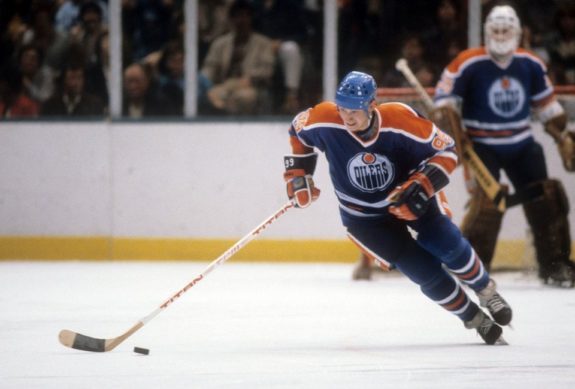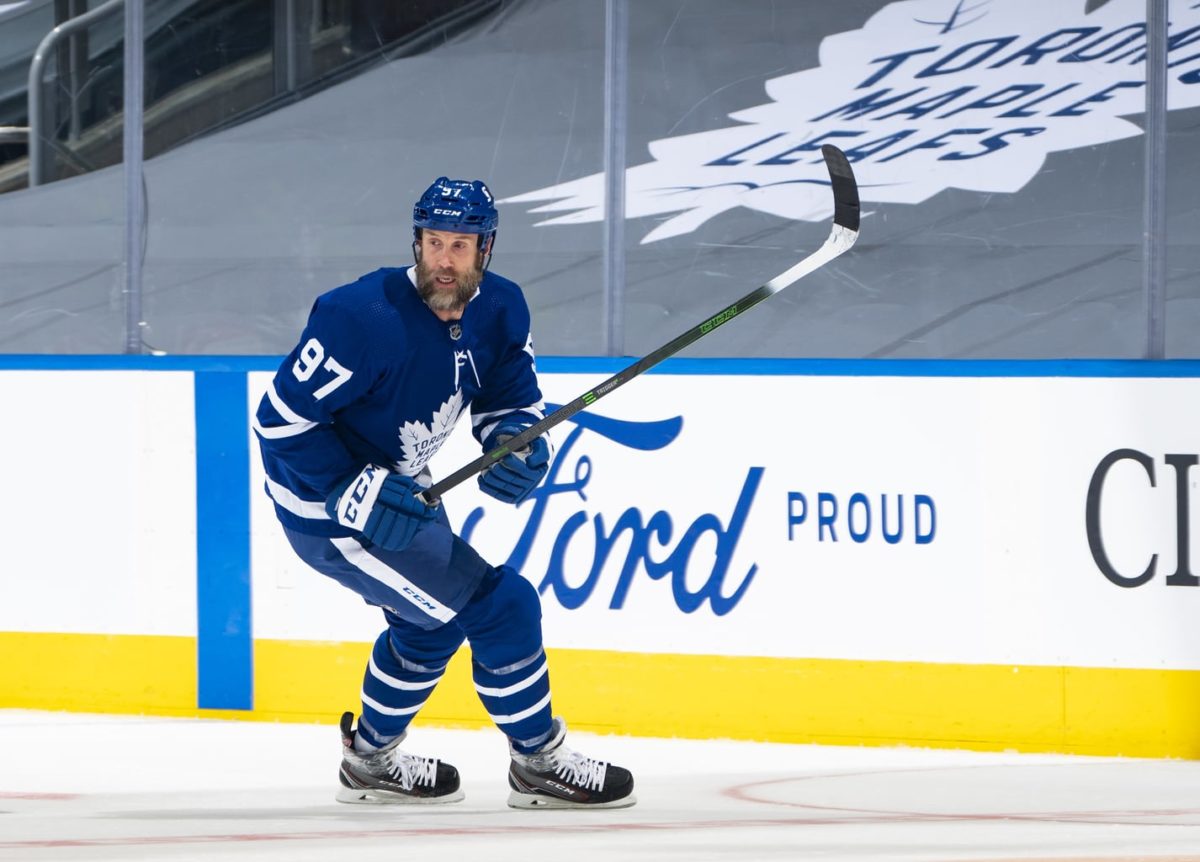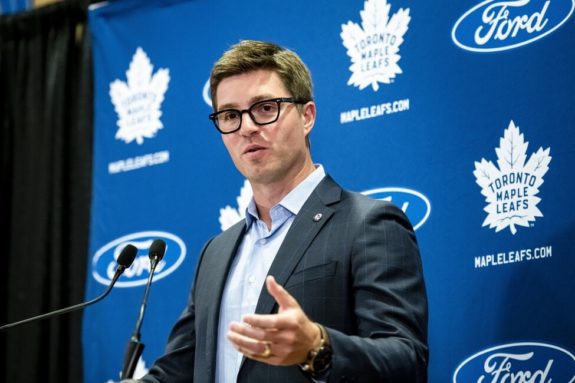Once again, I’m privileged to be collaborating with long-time Toronto Maple Leafs’ fan Stan Smith to write this post. In it, we trace the recent history of the team in its frustrating quest for Stanley Cup success and offer reasons why the Maple Leafs’ philosophy for dealing with prospects and expiring contracts has changed over recent seasons in response to the team’s success.
Rewarding NHL Teams for Failure
The NHL is set up to reward failure. In the name of parity, not only does the NHL have a hard salary cap, which no team is allowed to go over, but the NHL also rewards bad teams with high draft picks.
Related: How Do Current Maple Leafs’ Players Stack Up Against the All-Timers?
There is a logic to that choice. That logic suggests that, if the poorer teams are able to choose the best young players available, those high draft picks will become stars. Those choices will help bad teams get better.
And, that logic sometimes works. The presence of Wayne Gretzky helped make the Edmonton Oilers a dynasty. Sidney Crosby has helped the Pittsburgh Penguins become a top-tier team. Sometimes great, and sometimes even generational players, have that impact.

However, sometimes that logic doesn’t always work. All one has to do is look at the recent history of the Buffalo Sabres; and, before Connor McDavid, the Oilers. The history of both teams suggests that being a bad team that gets high draft picks doesn’t always result in bad teams becoming good teams.
In Truth, the Maple Leafs Did Benefit from Being a Bad Team
As most Maple Leafs’ fans understand all too well, the history of their beloved franchise hasn’t always been stellar. In fact, there have been stretches of what – at best – can be called mediocrity.
Until recently.
For as frustrating as the Maple Leafs’ recent run of playoff failure has been, it would ignore the truth to say that over the past few seasons the Maple Leafs haven’t been a good hockey team. In part, it’s because they’ve been rewarded for the poverty of their previous records.
Related: One For the Ages: “Cowboy” Bill Flett’s 1972-73 NHL Season
Then things started to change:
In the 2012 NHL Entry Draft, the organization selected Morgan Rielly with the fifth draft pick.
In 2014, they selected William Nylander with the eighth pick.
In 2015, they selected Mitch Marner with the fourth pick.
In 2016, they hit the jackpot when they picked Auston Matthews with the first overall pick after they finished dead last during the 2015-16 season.
The Maple Leafs Began to Gel in 2016-17
When the 2016-17 season started, the Maple Leafs were expected to be a better team. However, with a large number of rookies joining the team – including Nylander, Marner, and Matthews – the group was still not expected to make the playoffs, and was looking to benefit by receiving another high pick.

Then, something exciting happened to the team in the 2016-17 season. The young Maple Leafs unexpectedly played well enough to battle for a playoff spot, and succeeded. During the team’s second last game of the season, it claimed the last spot in the East.
As a result, the Maple Leafs didn’t get a top-10 draft choice. Instead, they ended up with the 17th pick, which they used to acquire Timothy Liljegren. Liljegren might still become an NHL regular, but to date has only played a total of 32 NHL games.
With Team Success, a New Strategy Evolved
Not only did the Maple Leafs get a much lower pick because of their unexpected success, they missed an opportunity to trade roster players for future picks and prospects, something they had done at the 2016 trade deadline when they acquired three second-round and two fourth-round picks. Quite the opposite, the team used a second-round draft pick to gain some forward depth in rental Brian Boyle. [Boyle was gone the next season to the New Jersey Devils.]
They followed their 2016-17 regular season success by setting a new franchise record for points with 105 in the 2017-18 season. They finished third in their division and conference. As a result of that finish, their first pick during the next draft was only a 29th pick.

Fortunately, it appears that pick might turn out to be a really good one. They selected Rasmus Sandin, who has burned up every level of hockey he has played and is touted by some to be the eventual successor to Morgan Rielly.
Making the Playoffs Every Season Comes at a Cost
Because of their unexpected lofty regular-season success, rather than dealing off players with expiring contracts, like Tyler Bozak and James van Riemsdyk, the Maple Leafs dealt away three draft picks to strengthen their forward and defensive depth.
Related: NWHL Roundup: Accursi Back with Beauts, Pilch Jumps to NHL, Beres Signs with Six
In 2018-19 they finished with 100 points, third in their division and fifth in their conference. They did not have a first-round pick in that draft, because they had used it in a trade for Jake Muzzin. Their first pick was the 53rd pick in the second round, which they used to pick Nicholas Robertson. The Maple Leafs did nothing at the trade deadline to either acquire players or picks, or deal away players or picks.
The Pandemic’s Turmoil, and the Maple Leafs’ Going for It
In 2019-20 the pandemic hit, turning everything into turmoil. The Maple Leafs, in a playoff position when play was suspended, were forced to compete in a play-in round. Once again they did nothing at the trade deadline to either improve their team or increase their future prospects. In the 2020 NHL Entry Draft, they picked 15th in the first round and selected prospect Rodion Amirov.
During the most recent 2020-21 season, for the first time the Maple Leafs went “all in.” They acquired veteran presence and used picks and prospects to acquire help in all three areas of their team, forwards, defense, and in goal.

When all was said and done, they had traded away all their picks, with the exception of their 2nd, 5th, and 6th-round picks in an effort to bolster their lineup so they were well-prepared to make a long run in the playoffs.
Maple Leafs’ fans know how well that effort went. The team failed once again to bust out of the first-round of the playoffs. The disappointment was palpable.
The Success also Brought the Failure
In summary, the Maple Leafs turned their franchise around starting in about 2016-17. During the past five seasons, the organization has dealt away a number of draft picks and has let a number of player’s contracts expire – all in an effort to improve the team’s chances in the playoffs. It is obvious that the team’s regular-season success has limited its opportunities to bolster the lineup for the future.
At this point in time, many Maple Leafs’ fans are pessimistic about the team’s chances going forward. It’s more than obvious what the team’s failures are. After all the regular-season success, the Maple Leafs have not won a single playoff series in the past five seasons.
Related: Was Lou Lamoriello as Good as Toronto Maple Leafs Fans Remember?
The organization has kept players on expiring contracts seeking playoff success. The team has traded away picks to strengthen itself for the playoffs. All to no avail. Every season since 2016-17 has ended in disappointment.
At this point, here we are as Maple Leafs’ general manager Kyle Dubas gets ready to build the next iteration – the 2021-22 roster – of the Maple Leafs. Who knows? This season might end in failure once again, which is what so many Maple Leafs’ fans have now come to believe seems inevitable. On the other hand, it could be a long, successful Stanley Cup run.

All this said, when we trace the recent history of the organization, if we were in leadership positions with this team, would we have done anything different in our quest for a Stanley Cup.
The answer is “No.” We would have done exactly the same thing.
NHL hockey can be a tough gig.